News June 2023: Gemologists use a variety of gemmological equipment to test, inspect and evaluate gemstones. A wide variety of equipment is used for examinations in the multifaceted field of gemology. The devices are often complex to use. We have created a selection of informative videos showing proper use, methods or good examples of examination and functional descriptions.
Use gem refractometer
Refractometers are part of the basic equipment in gemstone examination. The refractive index in gemology provides information about important characteristics of a gemstone. They are used, for example, to distinguish emerald, spinel, glass and tourmaline. A refractometer can be used to assess the authenticity and quality of a stone.
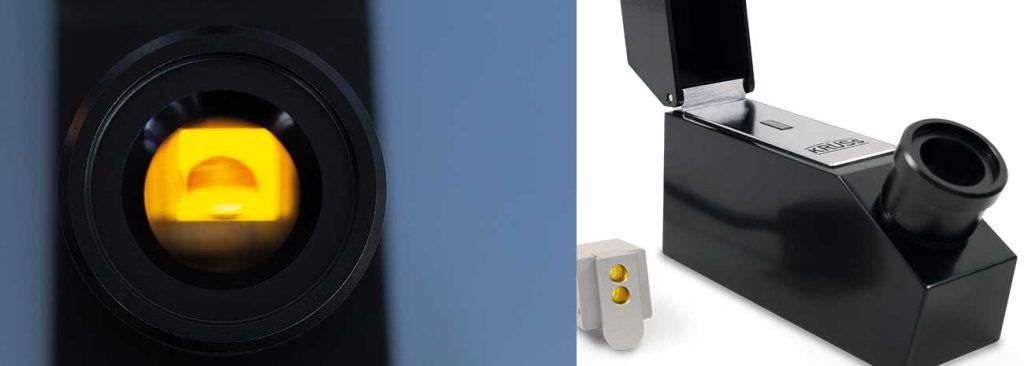
Recommended refractometer videos
Claire has a degree in gemmology and works with JTV, one of the largest jewelry retailers in the United States. It shows how to use the gem refractometer in the video – Gem Tools: Refractometer. We liked how it shows the function of the refractometer. It introduces devices with internal and external scales and explains the function by means of an examination. It also shows how to work with a polarizing filter.
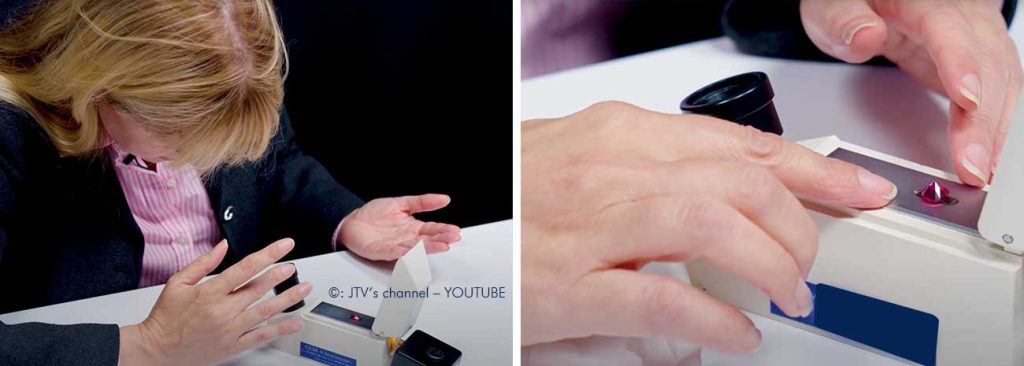
Another video very worth watching – Gem Identification – Refractometer Basic Use-, for using a refractometer, we found at Awaken Crystals. All basic functions are simply explained with the help of examination examples. Different methods and examinations are shown, e.g. for the determination of optical axes as well as the value determination of single and double refractive bricks.
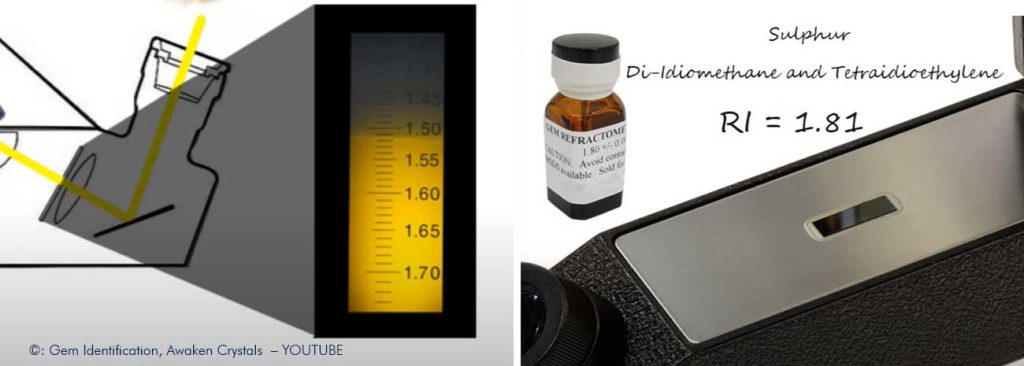
Practical examples by A.KRÜSS
Our information on the examination with high-quality gem refractometers and the determination of the refractive index of gemstones can be found in the application article: Determining gemstones with the refractometer . Background knowledge on the use of refractometers can be found in the method article Refractometry.
Apply polariscopes
Polariscopes facilitate the rapid detection of common gemstone imitations, such as glasses or synthetic spinels. This is done by studying the optical properties of the stones with polarized light. The polariscope makes it possible to examine both polished and rough stones.
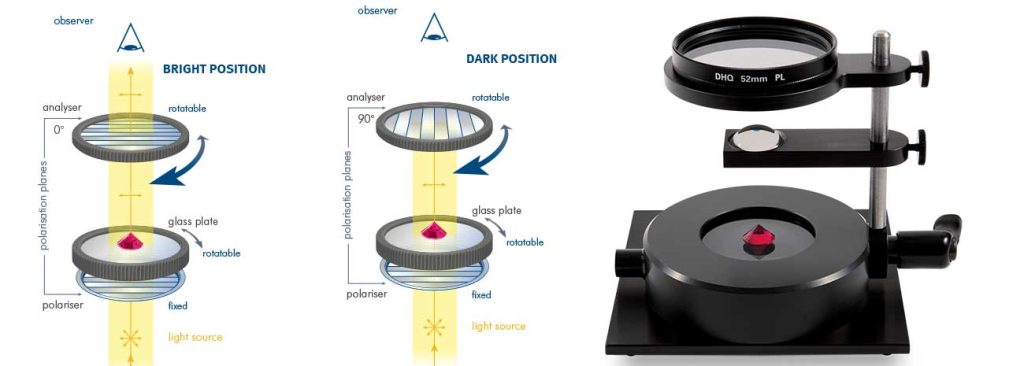
Informative POLARISKOP videos
A nice video is “How to use the polariscope” on the Gem-A channel. It shows the examination method with a polariscope. Presenter Julia Griffith demonstrates how gemstones behave under the polariscope and what conclusions can be made using this examination method.
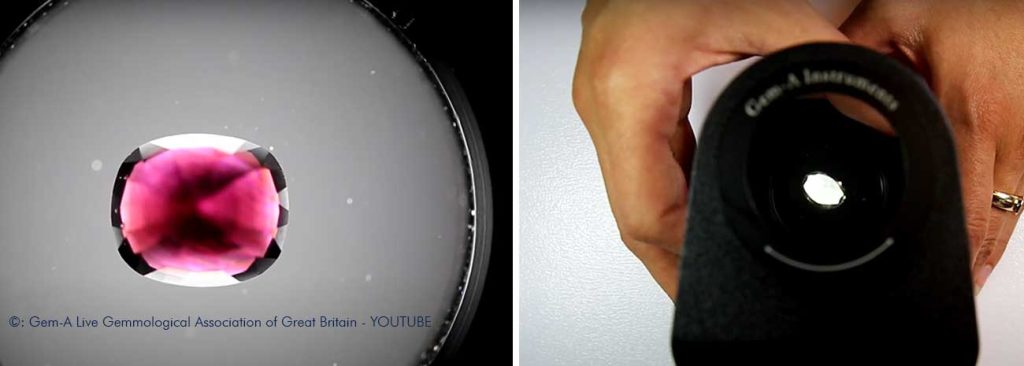
Another interesting video on polarization is shown by Awaken Crystals. In the film – Gem Identification-Polariscope Basic Use- the study is also supplemented with explanatory function graphics.
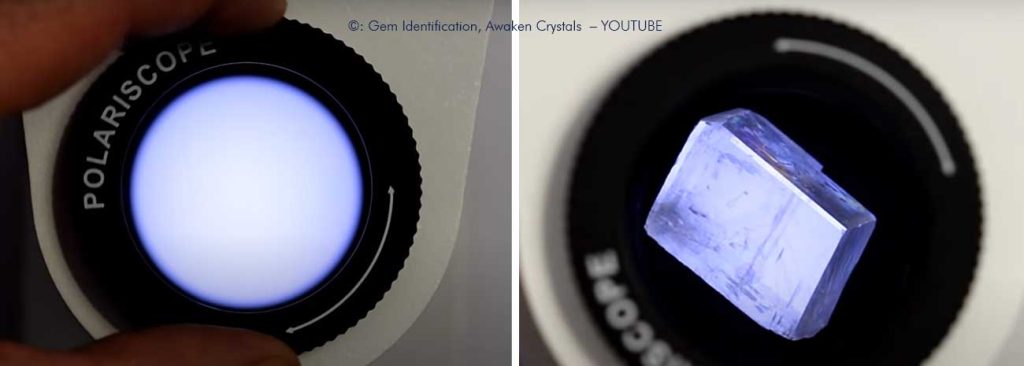
Polariscope: Practical examples by A.KRÜSS
Investigations with the polariscope and the determination of gem imitations as well as the distinction of ruby or tourmaline, can be found in the article: distinguishing gemstones from glass. Background information on examinations with the polariscope can be found in the Polariscopy article.
Gemmological examination with the dichroscope
Dichroscopes reveal whether transparent, coloured gemstones exhibit pleochroism, i.e. direction-dependent polychromatism. An example for the visibility of two colors are e.g. emeralds, their multicolor (dichroism) shows in green and blue-green hues.
Video tip: On the “Jewellery trade resources channel” a gemologist shows how the different devices are used and how pleochroism is made visible with them.

Dichroscope: Practical examples by A.KRÜSS
Background information on examinations with dichroscopes can be found in the article Dichroscopy on methods. Practical dichroscope application examples can be found in the article: Testing gemstones and detecting imitations.
Analysis of gemstones with UV light
Many gemstones, imitations or syntheses fluoresce under the light of ultraviolet lamps. UV lamps produce individual characteristic colors or color changes at different wavelengths with long-wave UV light (366 nm wavelength) and short-wave UV light (254 nm wavelength). Thus, these devices make stones distinguishable from each other.
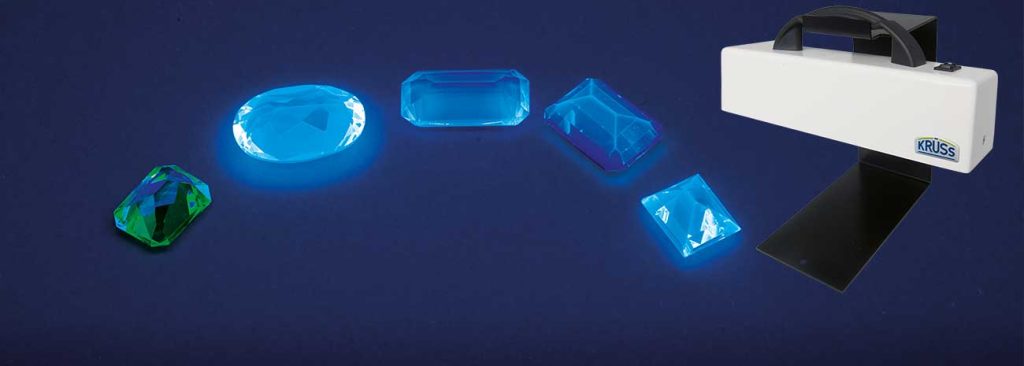
Analysis with UV light explained in video
For the examination with a UV analysis lamp, we liked the video Fluorescence by Julia Griffith on Gem-A Live. It not only shows the examination, but likewise demonstrates with informative graphics exactly how luminescence occurs. She also presents different gemstone examinations and thus explains how a UV light analysis is professionally performed.
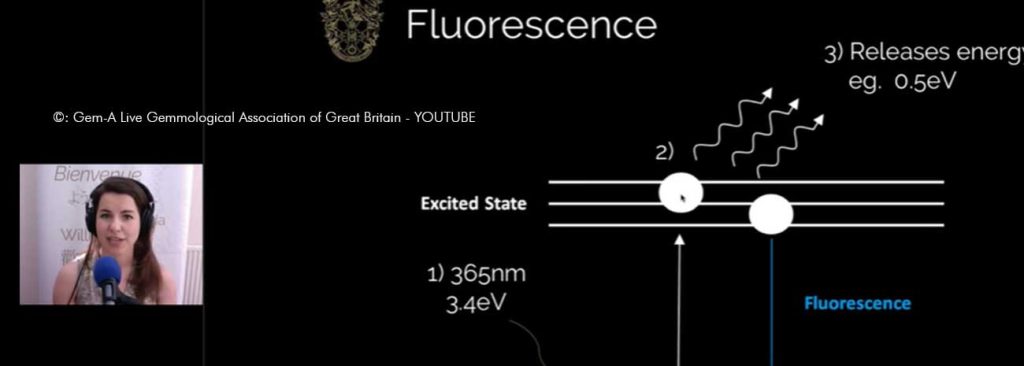
Our practical examples for UV light analysis
For the use of the UV analysis lamp and for the examination of gemstones and jewelry stones, see e.g. the article: Detecting diamond forgeries under UV light. More information on the examination method with UV light and phosphorescence as well as fluorescence can be found in the Luminescence method article.
Entertaining and informative : Gemmological equipment at a glance
It is often difficult to decide which of the many gemmological devices to buy first.
Peter Nelson has produced a video worth watching for purchase orientation titled: “Gemology Tools: What Do I Buy, When?” Here he explains different gemological tools in an entertaining 17 minutes. Its overview consists of: Microscopes, refractometers, magnifiers, dichroscope, spectroscopes, tweezers (different materials / with or without locks) and Chelsea filters.

We like his entertaining yet informative specialty channel – Gemology for Schmucks. If you want to be well informed and appreciate not so dry and scientific information, this is the right place.
